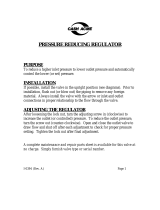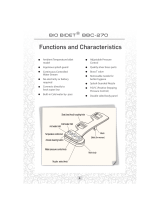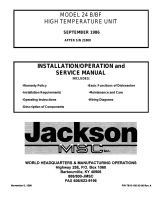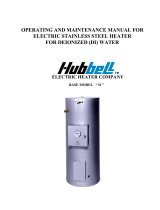
SECTION
MAINTENANCE & LUBRICATION
4-1. MOTOR
No Lubrication required
4-2. PUMP
No Lubrication required
4-3. DOORS
No Lubrication required
4-4. WASH ARMS
a. Wash arms (upper and lower) should turn freely and
continue turning for a few seconds after being whirled by
hand.
b. If the scrap screens are not properly in place, obstructions,
such as prune seeds or bones, may clog the wash arm nozzles.
The wash arms are easily removed for cleaning.
c. To remove the lower wash arm, first lift off the rinse arm, then
unscrew the spindle bearing pin (item 8, figure 6-4). Lift off lower
wash arm.
d. The upper wash arm(s) is removed by removing the wash
rotor nut (item 12, figure 6-6).
4-5. FINAL RINSE ARM & NOZZLES
a. The rinse nozzles will need frequent cleaning if the water
contains much lime or other solids.
b. The hole in the rinse nozzle on the lower rinse arm may be
cleaned with a wire and paper clip. Push the scale or ob-
struction into the rinse arm, then unscrew the end plugs and
flush out the tubes by operating the rinse. The lower rinse arm
may be lifted straight off the bearing pin and thrust washer
assembly.
c. The upper final rinse nozzles can be cleaned with a wire brush
and by inserting the end of a paper clip thru the nozzle. Then
remove the 1/2" pipe cap at the end of the final rinse line and
flush out the line (item 28, figure 6-5).
4-6. PUMP MOTOR OVERLOAD PROTECTION
a. Wash Motor(s)
Wash Motor protection is provided by Slow-Blow type cartridge
fuses. In the event a foreign article jams the pump impeller, the
motor will draw an excessive amount of current and open (blow)
the fuse(s). After clearing the foreign article from the pump, the
fuse(s) must be replaced before the pump motor will operate.
WARNING: SEE FIGURE 6-11, ITEM 29 FOR LOCA-
TION OF FUSES.
IMPORTANT: An open (blown) fuse must always be replaced
with the same size and type of fuse(s).
INCREASING THE FUSE SIZE OR RATING WILL
ELIMINATE THE MOTOR PROTECTION AND
VOID THE MACHINE MOTOR WARRANTY. Refer
to figure 6-11, items 1 thru 3A, for the proper fuse
size. It is suggested that spare fuses be purchased
and kept on hand. These fuses can be obtained
from your Blakeslee parts distributor or authorized
service agency. Refer to the authorized service
distributor and service agency listing booklet that
was packaged with the machine for the one in your
area.
4-7. TROUBLESHOOTING
WASH PUMP MOTOR WILL NOT START (EITHER
TANK)
1. Automatic timer defective.
Operate wash pump manually (see paragraph 3-6d). If pump will
run on manual but not automatic, this indicates a defective timer.
2. Motor overload fuses blown.
Check the three fuses for continuity (see items 1 thru
3, figure 6-11).
Check junction box above motor if not working.
NOTE: If overload fuses are blown (open) this indicates either a
defective motor or a foreign object has jammed the pump
impeller. Turn off power supply, drain tank and check and
remove any obstruction in the tank and pump intake.
MACHINE WILL NOT START
1. Main source of power off. Check power supply from customer's
fuse or circuit breaker.
2. Control fuse blown open. Check control fuse for , continuity.
3. Door safety switch not actuated or defective. Be sure door is fully
closed and rear portion of door handle has activated (closed) the
switch. (See figure 1-2).
NO TANK HEAT
1. HEAT/FILL switch not "ON" or defective. Flip the switch to "ON"
position. If red "POWER" light comes on, switch is good. Check
further.
2. Main gas valve, steam valve or electrical heating circuit breaker
not turned on. Check.
15























